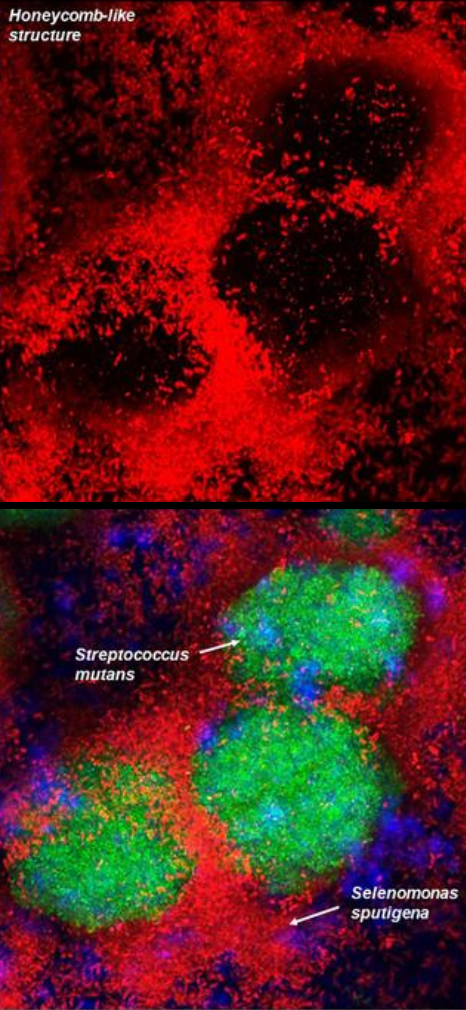Identifying a new contributor to tooth decay - nih.gov

At a Glance
- A type of bacteria called Selenomonas sputigena helps another contributor to tooth decay to form biofilms and produce damaging acid.
- Breaking the relationship between these two species may be a new strategy for preventing dental cavities.
Tooth decay can occur in people of all ages. It's caused by interactions between the diet and the microbes that live in the mouth. If left untreated, tooth decay can cause pain, infection, and tooth loss. Young children are particularly vulnerable to severe tooth decay, which affects around 600 million kids worldwide.
Bacteria that convert sugar to acid—and that can thrive in an acidic environment—are a major driver of tooth decay. These live within biofilms, communities of microbes that live together in a protective, sticky matrix. But how different bacterial species interact to contribute to cavity formation is not well understood.
To get a fuller picture of oral bacterial interactions, an NIH-funded research team led by Drs. Kimon Divaris and Di Wu at the University of North Carolina at Chapel Hill and Dr. Hyun (Michel) Koo from the University of Pennsylvania identified species found in the mouths of more than 400 children. They then studied how these might help cause cavities. Their study appeared on May 22, 2023, in Nature Communications.
Using DNA and RNA sequencing of the microbial communities, the team found that 16 species of bacteria were more abundant among children with cavities. Using various techniques to study biofilms, the investigators then teased out how these oral bacteria might actually cause cavities.
Based on their initial findings, the researchers selected four species for further study, including Streptococcus mutans, which was already known to be a major driver of tooth decay. The roles in tooth decay of the other three potential culprits hadn't been explored. These were S. sputigena, Prevotella salivae, and Leptotrichia wadei.
All four bacterial species could produce acid from sugar and survive in an acidic environment. The combination of S. mutans and S. sputigena produced the most acid, at higher rates than either species alone. This suggested they may have a cooperative relationship.
None of the three new species could form biofilms when grown alone. But all three each formed biofilms when grown with S. mutans. The combination of S. mutans and S. sputigena formed the largest biofilms.
Further work showed that biofilms formed by S. mutans and S. sputigena had a specific, honeycomb-like structure. S. sputigena have appendages called flagella that normally let them move freely. But when grown with S. mutans, S. sputigena gets trapped in place by sticky compounds produced by S. mutans. They then form the honeycomb-like structure around clusters of S. mutans.
The structure created by the trapped S. sputigena provides a scaffold for further biofilm growth and acid production. When the researchers prevented S. mutans from producing the compound that traps S. sputigena, the bacterial duo could no longer produce biofilms or tooth-damaging acid.
The team next infected the mouths of rats with S. mutans, S. sputigena, or a combination of both. S. sputigena alone did little to cause tooth decay. But S. sputigena and S. mutans together caused substantially more tooth decay than S. mutans alone. This suggests that disrupting the interaction between these two bacteria may be a way to prevent cavities.
"Disrupting these protective S. sputigena superstructures using specific enzymes or more precise and effective methods of tooth-brushing could be one approach," Koo says.
—by Sharon Reynolds
Funding: NIH's National Institute for Dental and Craniofacial Research (NIDCR), National Center for Advancing Translational Sciences (NCATS), and National Institute of Diabetes and Digestive and Kidney Diseases (NIDDK); Colgate–Palmolive.
Comments
Post a Comment